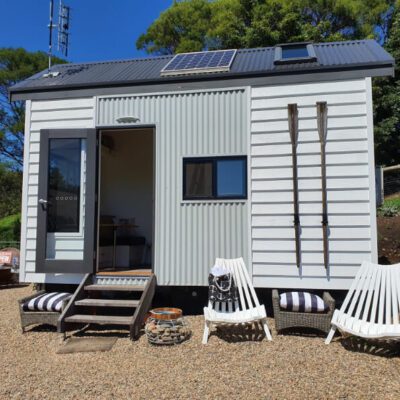5 Ways The Qube Eco Tiny Homes Houses Can Reduce your Carbon Footprint
We are all looking for ways to tread more lightly on the earth and reduce our personal carbon footprint. In this blog post we review five ways that The Qube can help us to do just that.
The climate emergency demands both collective and individual responses. Tiny houses can help.
First, tiny houses offer reduced use of construction materials compared to conventional buildings. One of the most powerful actions for the climate that we can take as individuals is reducing the amount of resources we consume. It’s a straightforward solution; smaller spaces mean fewer resources. Choose a tiny house for a guest room in your garden rather than an extension to your house, or a tiny house as a home office or craft room.
Second, the majority of tiny houses are built with timber. No concrete, no steel. This is great news for our carbon footprint because concrete is a significant contributor to the huge carbon burden of the construction industry. Tiny houses bypass much of this pollution by using timber; a time honoured construction material with thousands of years of heritage. Studies have reported that the carbon burden of a building can be reduced by as much as 97% simply by using sustainably managed forest timber.
Using sustainably managed timber can reduce the carbon burden of a building by as much as 97%.
Thirdly, tiny houses lend themselves to the inclusion of renewable energy sources. This includes things like solar panels, wind turbines, and other green carbon reducing technology like dry composting toilets, gray water recycling and rainwater harvesting. Dry composting toilets might sound a bit strange at first, but they are an effective, fragrance-free method for dealing with waste! Likewise, recycling gray water from washing your dishes by collecting it and using it to water your plants is another simple and fun way to reduce your impact on the planet.
Renewable energy sources are easily incorporated into most tiny house designs.
The fourth point is a simple but effective one. Because of the smaller size of tiny houses, they use significantly less energy to heat and cool. This means lower bills for you and a reduced carbon footprint. Win-win.
Finally, tiny houses encourage us to think about how much we consume; what we buy, and what we need. Many people who live in tiny houses report that they own fewer possessions, they shop for clothes and other non-essential consumer items much less frequently.
In part, this is explained by the smaller overall space of a tiny house – if you have nowhere to put your 40 inch TV screen or your Peloton bike, you are less likely to buy it in the first place. But the effect is also one of mentality; tiny house residents often report increased time spent doing things like gardening, crafting, and spending time outside, alongside a reduced interest in buying more ‘stuff’. The overall impact on reducing personal carbon footprint can be significant.
For a relatively small initial investment, a tiny house has the potential to bring a lifetime’s worth of carbon savings to your own personal footprint. The solutions they offer are deceptively simple and can be highly effective. If you have any questions, you can speak to a member of our team here.


